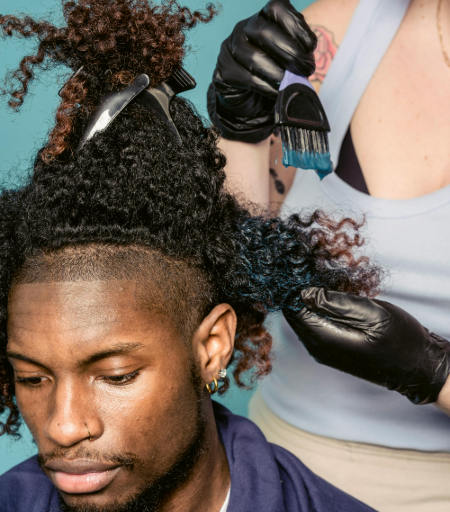I’ve learned firsthand that beauty should never come at the cost of your health. If you’ve ever experienced burning, itching, or swelling after coloring your hair, you’re not alone. In fact, home remedies for hair dye allergy have become essential knowledge for many people—myself included—who suffer from these frustrating reactions.
A hair dye allergy can manifest in various ways, from an itchy scalp and redness to severe swelling and blistering. These are classic hair dye allergy symptoms and are often triggered by a chemical called PPD (para-phenylenediamine)—one of the most common allergens found in permanent hair color.
Surprisingly, PPD allergies are more common than many think. Studies suggest that up to 7% of people in Western countries may develop sensitivity to PPD over time, and the number is growing with the increasing popularity of home hair coloring kits.
In this article, I’ll explain what causes these allergic reactions, how to identify them, and most importantly—how to treat them naturally at home using safe, effective remedies. Whether you’re dealing with a mild rash or looking to avoid future flare-ups, you’ll find practical guidance to soothe your scalp and restore your peace of mind.
Understanding Hair Dye Allergies
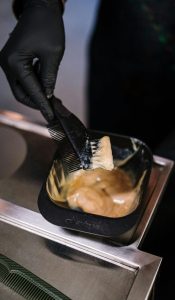
Hair dye allergies happen when your immune system reacts negatively to certain chemicals in hair color products—especially synthetic dyes. The most well-known trigger is PPD, but other chemicals like PTD (para-toluenediamine) can also provoke strong reactions.
What Causes Hair Dye Allergies?
Most allergic reactions stem from PPD sensitivity, a condition where your body treats this compound as a threat. PPD is used in many permanent and semi-permanent hair dyes because it helps achieve long-lasting, dark color. However, once applied to the skin, it can oxidize and trigger allergic contact dermatitis or other forms of chemical irritation.
Common risk factors include:
-
A history of skin allergies or eczema
-
Regular use of dark-colored dyes
-
Lack of a proper patch test before application
-
Sensitive or broken scalp skin
PPD isn’t the only offender. Hair dye chemical irritants like resorcinol, ammonia, and parabens can also play a role, especially in people with heightened skin sensitivity.
How to Identify a Hair Dye Allergic Reaction
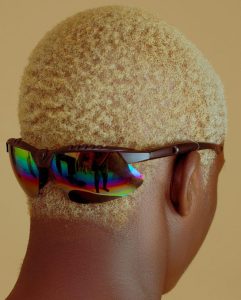
Recognizing a reaction early can help prevent it from escalating. Here’s how to distinguish between mild and severe hair dye reaction symptoms:
Mild symptoms:
-
Itchy scalp
-
Redness or slight burning
-
Flaky or dry patches around the hairline
Severe symptoms:
-
Swelling around the eyes, ears, or neck
-
Blistering or oozing lesions
-
Difficulty breathing or dizziness (seek medical help immediately)
Commonly affected areas include:
-
The scalp
-
The forehead
-
The ears
-
The neck and nape
10 Most Effective Home Remedies for Hair Dye Allergy
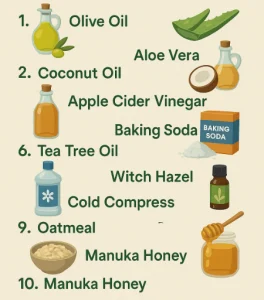
Cold Compress Therapy
When my scalp flares up after coloring, I reach for a cold compress for hair dye reaction—it’s my go-to for quick relief. A cold compress helps reduce swelling from hair dye allergy, numb the burning sensation, and soothe irritated skin.
How to apply:
-
Wrap a few ice cubes in a clean cloth or use a gel ice pack.
-
Gently press it against the affected areas (scalp, ears, neck).
-
Hold for 10–15 minutes at a time.
How often:
Apply 2–3 times daily until inflammation subsides. Avoid direct ice contact to prevent skin damage.
Aloe Vera Gel Treatment
Aloe vera for PPD allergy is one of nature’s most effective remedies. Its cooling and anti-inflammatory properties help soothe scalp irritation naturally and speed up skin recovery.
How to apply:
-
Fresh aloe gel: Scoop gel from a fresh aloe leaf and apply directly to the irritated scalp.
-
Store-bought gel: Use a fragrance-free, 100% pure aloe vera gel.
Frequency:
Apply 2–3 times daily and leave on for at least 30 minutes. For overnight relief, apply before bed and rinse in the morning.
Baking Soda Paste
If you’re dealing with scalp irritation, a baking soda remedy for scalp irritation can help neutralize hair dye chemicals that remain on the skin and reduce itchiness.
How to make it:
-
Mix 1 tablespoon of baking soda with enough water to form a thick paste.
-
Apply to the affected area gently, avoiding broken skin.
-
Leave on for 10–15 minutes, then rinse thoroughly with lukewarm water.
Use only once per day, and discontinue if excessive dryness occurs.
Apple Cider Vinegar Rinse
An apple cider vinegar hair dye allergy rinse works wonders to balance scalp pH naturally and reduce inflammation. Its antibacterial properties also help prevent infection from scratching.
How to use:
-
Mix 1 part apple cider vinegar with 3 parts water.
-
After shampooing, pour the solution over your scalp and let it sit for 5 minutes.
-
Rinse thoroughly with cool water.
Recommended frequency:
2–3 times a week until symptoms improve. Always dilute properly to avoid further irritation.
Coconut Oil and Honey Mask
This remedy combines the moisturizing benefits of coconut oil for hair dye irritation with the antimicrobial power of honey—a perfect duo to calm an angry scalp.
How to make & apply:
-
Mix 1 tablespoon of virgin coconut oil with 1 teaspoon of raw honey.
-
Warm slightly if solidified, then apply evenly to the scalp.
-
Massage gently and leave it on for 30–45 minutes.
-
Rinse with a mild, sulfate-free shampoo.
Use 2–3 times per week for the best results. This mask also helps repair dryness and damage caused by chemical exposure.
Colloidal Oatmeal Bath
When my skin feels inflamed and itchy after a hair dye reaction, a soothing oatmeal treatment for skin irritation provides almost instant relief. Colloidal oatmeal works by creating a protective barrier that locks in moisture and reduces inflammation.
How to prepare:
-
Add 1 cup of colloidal oatmeal to a bathtub filled with lukewarm water.
-
Stir to ensure even dispersion.
How to apply:
Soak your body or gently rinse your scalp with the bathwater for 15–20 minutes.
Frequency:
Use once daily during flare-ups. This remedy is safe for daily use and can soothe the scalp with colloidal oatmeal without causing further irritation.
Yogurt and Lemon Mixture
A homemade blend of yogurt and lemon is a time-tested remedy I’ve turned to for scalp inflammation. The yogurt soothes, while the lemon helps disinfect and reduce itching. Together, they create a powerful yogurt remedy for hair dye rash.
How to make it:
-
Mix 2 tablespoons of plain yogurt with 1 teaspoon of fresh lemon juice.
-
Apply to affected areas of the scalp.
Application:
Let it sit for 20 minutes, then rinse off with cool water.
Frequency:
Use this lemon mixture for scalp relief 2–3 times per week, especially during the early stages of a mild allergic reaction.
Gentle pH-Balanced Shampoo Washing
After experiencing a reaction, I always switch to a mild shampoo for allergic reaction recovery. These shampoos are free from sulfates, parabens, and fragrances, making them ideal for gentle hair washing after a dye allergy.
Technique:
-
Use lukewarm water (never hot).
-
Apply shampoo gently—avoid scratching the scalp.
-
Rinse thoroughly and pat dry with a soft towel.
Product tip:
Look for shampoos labeled “hypoallergenic,” “pH-balanced,” or “sensitive scalp” (e.g., Cetaphil Baby Shampoo, Free & Clear, or Vanicream).
Frequency:
Wash every 2–3 days to keep the scalp clean while minimizing irritation.
Over-the-Counter Antihistamines
When symptoms go beyond the surface—like persistent itching or mild swelling—I rely on antihistamines for hair dye allergy to calm the immune response. Popular choices include Benadryl for PPD reaction and non-drowsy options like cetirizine or loratadine.
Dosage:
Follow the instructions on the package or consult a healthcare provider—especially if combining with other medications.
When to take:
Take at the first sign of a reaction and continue as needed for 2–3 days.
Note:
Antihistamines help manage internal symptoms but should be used alongside topical treatments for complete relief.
Potassium Permanganate Solution
While less common, potassium permanganate for PPD allergy is a powerful treatment used to neutralize allergens. It acts as an oxidizing solution for hair dye reaction, helping dry out blisters and disinfect affected skin.
Dilution (IMPORTANT):
-
Mix 1 gram of potassium permanganate in 1 liter of water to create a weak (0.1%) solution.
-
The water should appear light pink—never dark purple.
Application:
Soak a clean cloth in the solution and gently dab it on the rash or blisters. Do not use on open wounds or large areas.
Frequency:
Apply once or twice daily for up to 3 days. Discontinue if irritation worsens.
Safety Note:
Always test on a small patch of skin first, and wear gloves during application.
Natural Hair Dye Alternatives for Sensitive Scalps
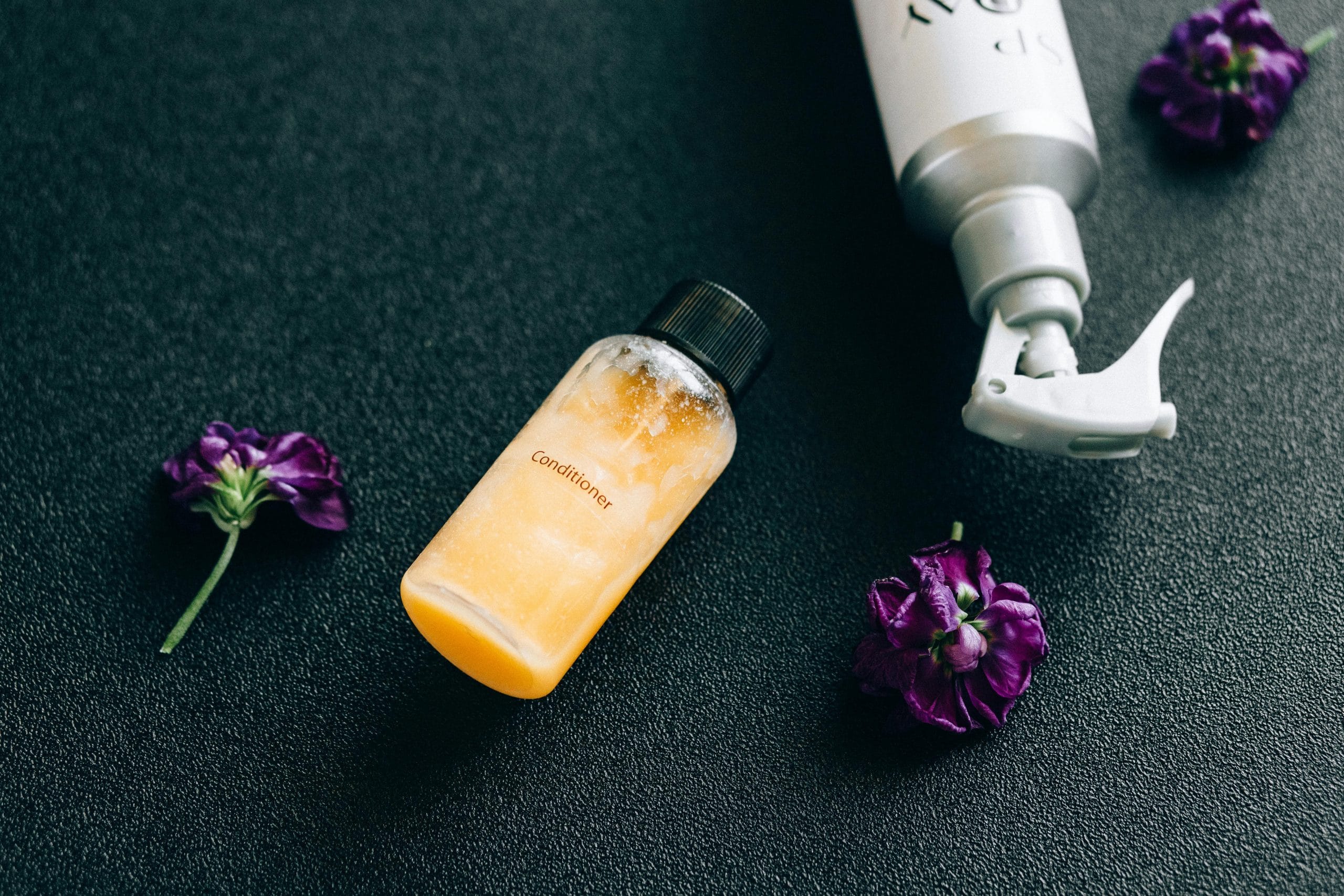
Plant-Based Dye Options
After dealing with a PPD allergy, I quickly realized that switching to natural hair dyes for PPD allergy is one of the best long-term solutions. Plant-based hair color alternatives are gentler on the scalp and significantly reduce the risk of allergic reactions.
Here are a few options I’ve personally explored:
-
Henna: A 100% natural dye derived from the Lawsonia inermis plant. It’s ideal for reddish-brown tones and offers conditioning benefits.
-
Indigo: Often used with henna to achieve darker shades like black or deep brown.
-
Walnut Extracts: A natural brown hair dye source, though it may darken over time and can cause reactions in people with nut allergies.
-
Beetroot: Produces a subtle red tint and is great for enhancing natural color or tinting hair masks.
These dyes are free from harsh chemicals and offer a safer route for those with PPD sensitivity.
Hypoallergenic Commercial Options
If you’re not ready to mix your own plant dyes, consider going with hypoallergenic hair dye brands. These are specially formulated for sensitive scalps and PPD-free hair color options are becoming more available.
What makes a hair dye “hypoallergenic”:
-
Free from PPD and PTD
-
No ammonia, parabens, or resorcinol
-
Dermatologist-tested and fragrance-free
Top brands to consider:
-
Herbatint (PPD-free, natural extracts)
-
Naturtint (plant-based, gentle formulation)
-
Madison Reed (ammonia-free, sulfate-free, and PPD-free)
Always check the label and perform a patch test—even with products labeled “hypoallergenic.”
Prevention Tips for Future Applications
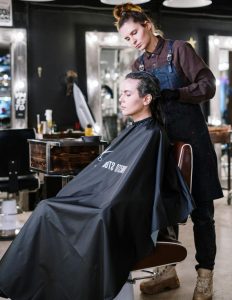
How to Conduct a Patch Test
Even with safer dyes, hair dye patch testing at home is essential. It’s the most reliable way to prevent allergic reactions to hair color before full application.
How to do it:
-
Mix a small amount of the hair dye following package instructions.
-
Apply a dab behind your ear or on your inner elbow.
-
Leave it uncovered for 24–48 hours.
What to look for:
-
Redness
-
Swelling
-
Itching
-
Blistering
If any of these appear, do not proceed with full application.
Scalp Preparation Techniques
Before applying any hair dye, I always follow pre-treatment protection methods to minimize skin exposure.
How to protect your scalp from hair dye:
-
Apply a thin layer of petroleum jelly or barrier cream along your hairline, ears, and neck.
-
Use coconut or olive oil on your scalp if it’s prone to dryness or sensitivity.
-
Avoid coloring if your scalp is broken, sunburned, or recently shaved.
These steps go a long way in preventing dye from touching sensitive skin directly.
When to Seek Medical Attention
While most reactions are mild, there are times when professional care becomes necessary.
Seek immediate help if you experience:
-
Swelling of the face or throat
-
Shortness of breath
-
Blistering or oozing skin
-
High fever or dizziness
These may indicate a severe hair dye reaction requiring emergency treatment. Doctors may prescribe:
-
Corticosteroid creams
-
Oral antihistamines
-
Steroid injections
-
In rare cases, epinephrine for anaphylactic reactions
Don’t hesitate to see a doctor for PPD allergy symptoms that worsen or fail to improve after home treatment.
Healing and Recovery
Restoring Scalp Health After a Reaction
After a major reaction, your focus should be on helping your scalp heal and regenerate naturally. Recovery from allergic contact dermatitis depends on the severity, but healing often takes 1 to 3 weeks with consistent care.
Supportive treatments:
-
Aloe vera gel for daily moisture
-
Colloidal oatmeal rinses to calm itching
-
Vitamin E oil or creams to promote skin repair
With the right care, you can heal your scalp after a hair dye reaction and avoid long-term damage.
Hair Care During Recovery
During recovery, my priority is minimizing further irritation while supporting new growth.
Use gentle products only:
-
pH-balanced shampoos (like Free & Clear or Vanicream)
-
Fragrance-free conditioners
-
No alcohol or harsh chemicals
Avoid:
-
Heat styling tools
-
Tight hairstyles
-
Additional coloring or treatments
Protective styles like loose buns, silk scarves, or braids help reduce scalp friction and keep hair stress-free during healing. This gentle approach promotes hair care after an allergic reaction and supports protecting a damaged scalp as it recovers.
Frequently Asked Questions
How long does a hair dye allergic reaction last?
A mild hair dye allergic reaction may last 1 to 3 days, while moderate reactions can persist for up to a week. Severe cases involving swelling, blisters, or contact dermatitis may take 2 to 3 weeks to fully heal, especially if not treated promptly.
Can I use hair dye again after having an allergic reaction?
No, it’s not recommended to use the same hair dye again after an allergic reaction. Future reactions may be worse. Switch to PPD-free, hypoallergenic, or natural alternatives, and always do a patch test before any application.
What ingredients in hair dye cause allergic reactions?
Besides PPD (para-phenylenediamine), common allergens include:
-
PTD (para-toluenediamine)
-
Ammonia
-
Resorcinol
-
Fragrances
-
Parabens
These chemical irritants can trigger contact dermatitis or allergic reactions in sensitive individuals.
Are natural hair dyes completely safe for people with PPD allergies?
Not always. While plant-based dyes like henna and indigo are generally safer, adulterated henna or commercial “black henna” may still contain PPD. Always verify ingredients and perform a patch test, even with natural products.
Can hair dye allergies cause permanent hair loss?
Most hair dye allergies cause temporary hair loss due to inflammation and scalp damage. However, repeated exposure or severe reactions may lead to follicle damage, which could result in permanent thinning in rare cases.
What’s the difference between irritation and an allergic reaction to hair dye?
Irritation usually appears immediately and causes burning or stinging due to harsh chemicals. An allergic reaction may be delayed (24–48 hours), involving itching, swelling, redness, or blisters, and is triggered by an immune system response.
Is it possible to develop a hair dye allergy suddenly after years of use?
Yes. Allergies can develop over time through a process called sensitization. Even if you’ve used the same dye for years without issues, repeated exposure can eventually trigger a reaction.
What is the best antihistamine for hair dye allergic reactions?
Diphenhydramine (Benadryl) is effective for quick relief of mild to moderate symptoms. Loratadine and cetirizine are good non-drowsy alternatives. Always consult a healthcare provider before use, especially if symptoms are severe or persistent.
- 7+ Proven Home Remedies for Sneezing That Actually Work - August 2, 2025
- 10 Natural Remedies for Eczema Relief - June 5, 2025
- How to Clean Pool Table Felt Without Damaging the Surface - May 9, 2025

